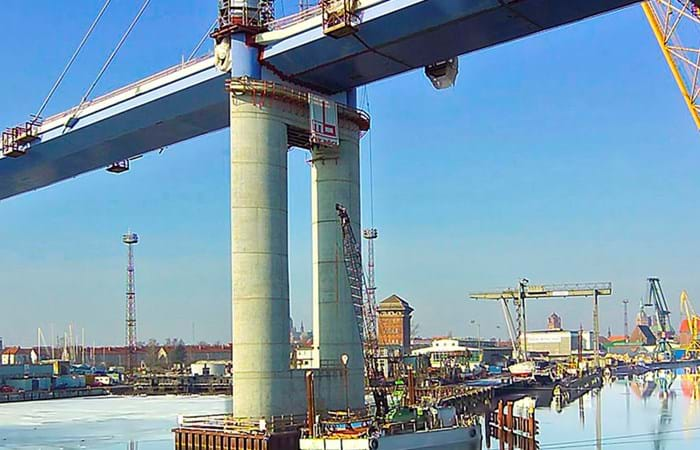SMIT’s 1,200 tonnes sheerlegs Taklift 7 completed a major German bridge building programme during 2006. The sheerlegs had spent several months at the new Stralsund Bridge, on the German Baltic coast. This suspension bridge links the mainland with the island of Rügen.
Taklift 7 lifted a total of 13 pylon sections and 16 bridge sections, with maximum weights in the 800 tonnes range. The lifting programme was completed successfully despite heavy ice and prolonged periods of poor weather. The sheerlegs made a valuable contribution to the construction of this box girder road bridge, which allows the B96 city bypass to cross the Greifswalder Chaussee. Construction of the four-lane Stralsund bypass began in 1997. The new bypass had reached the ferry check-in area at Sassnitz Port by the following year. Completion of the Stralsund bridge followed in 2006. The construction of the highest section of the Stralsund Bridge involved the lift and positioning of the top unit of a 127 m pylon, with a weight of 84 tonnes. Taklift 7 employed its 175 m long boom for this task.
